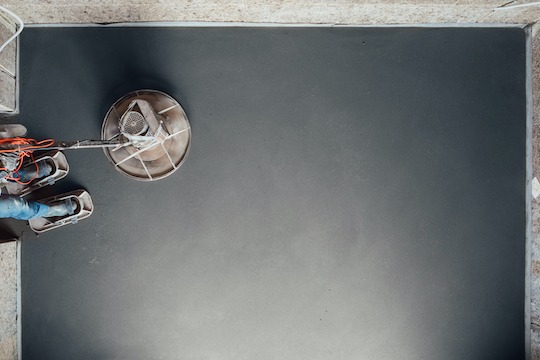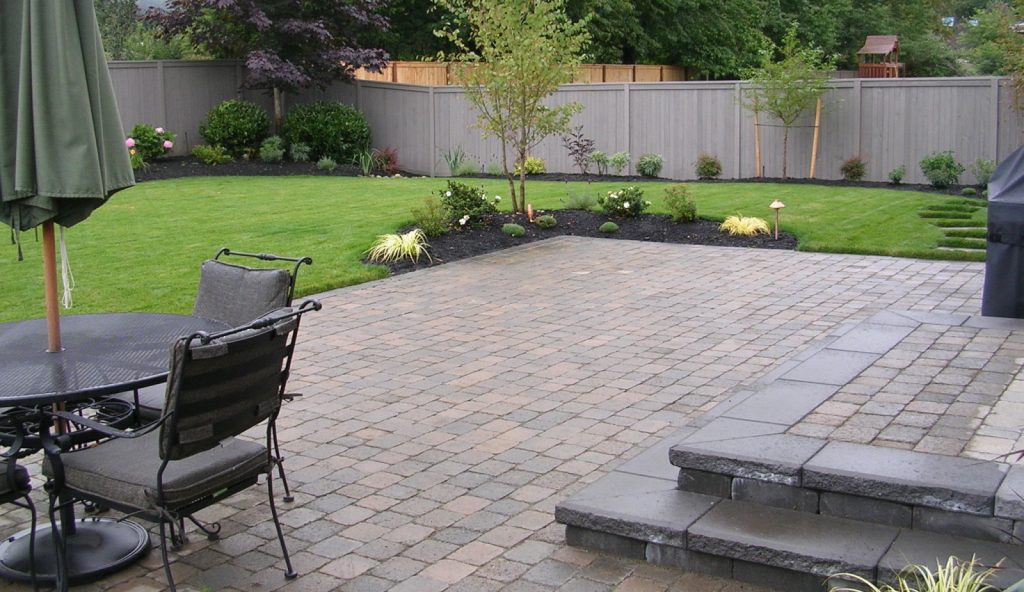Not just in floors but countertops and walls, concrete opens up all kinds of design possibilities – and, by the way, it’s pretty darn strong.
Page through the hipster home magazines and websites and you’re almost certain to see polished concrete floors in sleek, modernist dwellings.
But concrete in interior designs isn’t just for the ultra-chic. It is an age-old material (invented 8500 years ago in the Middle East for floors, structures, and underground cisterns) that, while very much at home in modern architecture, can be used in a variety of interior styles of new and existing homes. It’s quite solid, of course, but also versatile because of how it can be formed and finished.
Consider the most popular applications. Looking nothing like the rougher surface of sidewalks and concrete driveways created by the local driveway contractor, concrete can be polished and sealed to look like a seamless, shiny floor. That’s not just in a basement but anywhere the supporting structure will be able to bear the weight. Concrete countertops in kitchens, baths, and wet bars are popular, and even some will use it, artfully, as a wall material. Move over, boring gypsum!
Floors, countertops, and walls – in concrete
Concrete floors are increasingly common in large retail stores because the surface is not a finishing element but part of the structure itself. No need for another floor covering like linoleum or tile and the glues that hold those things there – just a polish and a sealant creates a shiny surface that is as easy to clean as it is resilient. What busy homemaker doesn’t want the same thing?
Next up is the countertop application. Some might prefer the “honest” look of basic, grey concrete under a protective seal, but the options to instead dye it an entirely different shade are many. They are completely customizable: pick any color and while you’re at it, any shape – concrete can be formed like putty. Adjacent to a sink a drain channel can be included along with an inset cutting board. Decorative glass or stone can be mixed into the concrete as well, perhaps providing a sparkle to liven up the task of cooking or the ambiance at a party.
The same limitless design sense can be applied to concrete walls. Whether by a professional artist, a child, or a mad naïf genius, splashes of color can be applied to bare concrete and covered over with a sealant. Basement rooms don’t have to look like spare bedrooms anymore.
Durable, low maintenance with concrete … but with a few downsides
As mentioned above, maintenance with concrete is simplified because there is no grouting or seams that require arduous scrubbing. It’s mostly a matter of sweeping and mopping, as needed. And if you’re building new, the option of a heated concrete floor – electric cables or hot water tubes embedded in the concrete – can be a real plus in winter.
Perfect, however, is in heaven while concrete is on earth. Concrete won’t be as kind to a dropped crystal flute as might wood or carpeting. Basement concrete floors have to be closely examined for moisture before committing it to a design treatment. Over time a large expanse of concrete, particularly floors, might crack due to settling, temperature, or seismic disturbances (cracks can be artfully disguised with cement paste).
And to be clear, concrete has a large carbon footprint (lots of heat required to make it). But so too do other materials (e.g., marble quarried in Italy). If you’re going to go with concrete, be reasonably sure it’s a choice you will want to live with for years to come. Reputable interior concrete contractors aren’t easy to find as the ones that make our roads. And depending on the elaborateness of your design, it can get costly.
Concrete might be standard for Moderns – and “middle-of-the-roaders” as well.


